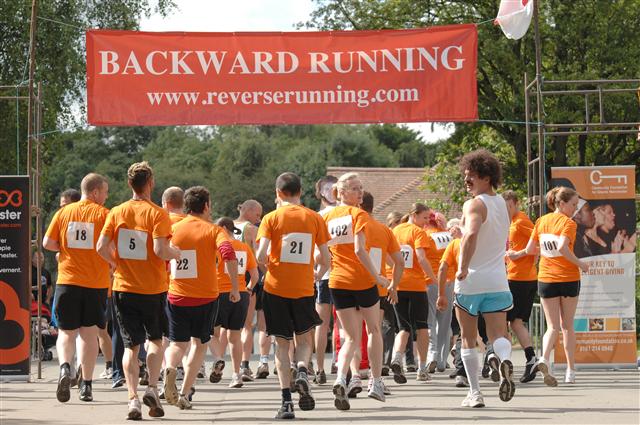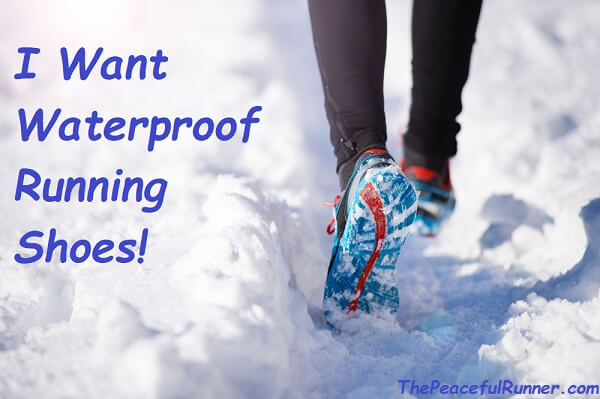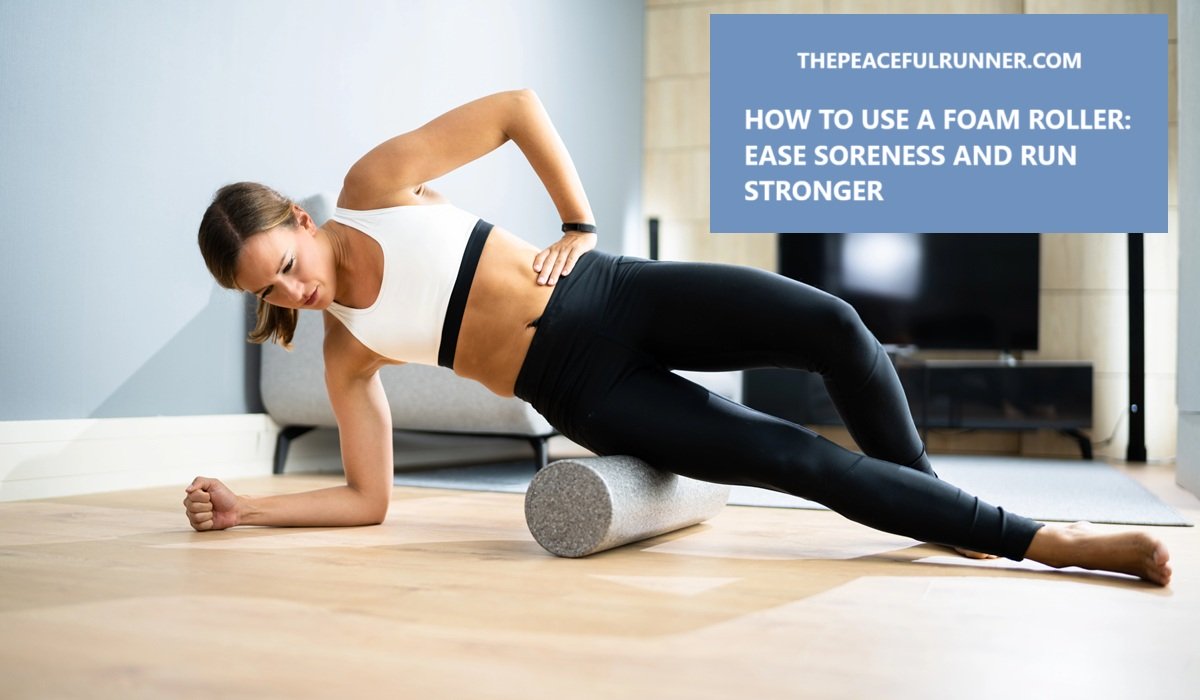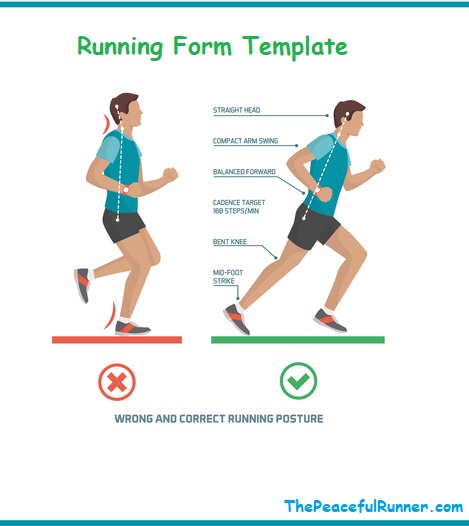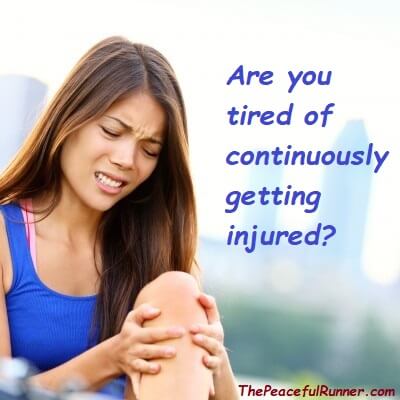- Home
- Running Form
- Backwards Running
The Surprising Benefits of Backwards Running
FTC Disclosure: As an Amazon Associate, I earn from qualifying purchases. Learn more
Backwards running—also called retro running—is exactly what it sounds like: running in reverse. It might look odd at first, but it’s actually a well-researched training method with unique benefits.
Most of us think of running as a straightforward activity—literally. But a growing number of athletes and fitness enthusiasts are discovering the surprising benefits of turning things around. Backward running may look unconventional, yet it’s proving to be a powerful way to build strength, protect joints, sharpen coordination, and add variety to training. Whether you’re an amateur runner looking to stay motivated, or someone seeking a low-impact alternative to forward miles, taking a few steps in reverse might just move your fitness forward.
Article Contents
Origin of Backwards Running
Benefits of Backwards Running
See How It's Done
Backwards Running for Injury Rehabilitation
Risks and Precautions
Get Started with Moving Backwards
How to Safely Add Retro Running
Gentle Introductory Workout
Origin of Moving Backwards
In China, backward walking and running have been practiced for thousands of years, valued as a way to restore balance in both body and mind. The idea is simple yet powerful: by moving in the opposite direction, we challenge ourselves in new ways, creating harmony and strength through contrast.
It has only been since the 20th century that backwards running has gained popularity in western cultures. To date, there has been 7 Retro Running World Championships. The latest took place in Bologna, Italy in 2018. The distances range from 100 meters to 10 kms. Previous events were held in Switzerland (2006), Italy (2008), Austria (2010), Spain (2012), Italy (2014) and Germany (2016). The 8th Retro Running World Championship (International Retro Running / IRR) was scheduled for July 2020 in Enfield, UK, but was postponed due to the pandemic. To my knowledge, it has never been rescheduled. If you are aware of any new developments, please share in the comments below or email me.
Athletes such as Garret Doherty from Ireland have been multi‐time champions in past retro running world competitions. And world record holder, Thomas Dold from Germany, has set numerous world records for walking and running backwards.
Benefits of Backwards Running
- Lower impact on joints
Retro running places less stress on knees compared to forward running, because the movement reduces the load on the patellar tendon and kneecap. It’s often used in rehab for knee injuries. -
Improves balance and coordination
Moving backward forces your body and brain to work differently, sharpening proprioception (body awareness). -
Strengthens complementary muscles
It targets muscles that forward running neglects, like the quads, calves, and shins, helping correct muscular imbalances and reduce risk of injuries. Also, in this position, the lower back gets a chance to rest as the abdominals do all the work, giving us a great workout for the tummy muscles. -
Boosts cardiovascular fitness
Retro running can elevate heart rate faster at lower speeds, giving you a strong aerobic workout in less time. -
Enhances running form and posture
Some coaches turn to backward running drills as a way to sharpen posture, refine stride mechanics, and even boost forward running efficiency. When you run in reverse, your spine naturally shifts into a more upright position, encouraging better alignment and suppleness through the back. This partial extension of the spine promotes a taller, more open posture—and over time, you may actually notice yourself standing a little taller, both on and off the run. -
Mental challenge
Because it requires focus, retro running can improve concentration and add variety to training.
See How It's Done
Want to see how it’s done? Check out the following video...

Backwards Running for Injury Rehabilitation
Most of our daily movements are forward—walking, running, climbing stairs, cycling, even sitting and bending. Over time, this one-directional pattern can create imbalances in our bodies. Retro movements, like backward running, offer a powerful way to restore balance and naturally improve posture.
Every year, countless runners face injuries caused by the repeated impact and pounding of forward running. Backward running, by contrast, is far gentler. Because the knee is bent on landing and the foot strikes with the forefoot first, the pressure on joints is reduced. The reversed mechanics strengthen the ankles and knees instead of wearing them down, lowering the risk of injury.
Knee pain, in particular, is one of the most common complaints among runners. With backward running, impact on the knee joint is minimal, while the reverse angle actively helps make the knee stronger. For this reason, it’s often recommended as a rehabilitation tool, gently rebuilding strength in weak or injured muscles.
In fact, some doctors now prescribe retro running for recovery from injuries such as hip and groin strains, hamstring issues, knee pain, shin splints, Achilles tendon problems, and ankle sprains. It’s not just a quirky alternative—it’s a proven way to heal, strengthen, and run with resilience. (Source: Backward Running: B.T. Bates, Ph.D.)
Experts also agree that walking backwards can improve joint, arthritis, and overall health.
Risks and Precautions
- Visibility: You can’t see where you’re going, so collisions or trips are common. Start on a track, treadmill, or open grass field.
- Overuse: It stresses muscles differently; introduce it gradually (short distances first).
- Balance issues: Some people may feel dizzy or disoriented at first.
How to Get Started with Moving Backwards
- Begin with Backward Walking to get used to and develop confidence when moving backwards.
- Try short intervals: 20–30 seconds of retro running, then forward running.
- Do it on a track, treadmill (carefully), or a safe, flat surface.
- Progress to longer sets once you’re comfortable and feel more confident.
How to Safely Add Retro Running
1. Warm up normally first
– 5–10 minutes of walking or light forward jogging.
2. Start small
– Begin with backward walking for 2–3 minutes on a track or treadmill.
– Progress to 20–30 second bouts of retro running.
3. Add intervals
– Example: After a run, finish with 4 × 50 meters of retro running on grass or a track.
– Or, on a treadmill: set speed to 2–3 mph, walk backward holding side rails until confident.
4. Use as a finisher or rehab tool
– Great at the end of runs to strengthen quads and shins.
– Also a low-impact alternative on recovery days.
5. Build gradually
– Increase to 5–10 minutes total over weeks.
– Never jump straight to long backward runs.
Safety Tips
- Always use a flat, obstacle-free surface (track, field, treadmill).
- Keep torso tall, eyes scanning over your shoulder every few steps.
- Shorten your stride to stay balanced.
-
Stop immediately if dizzy or strained.
Try this Gentle Introductory Workout
- Main run: 30 minutes forward jogging.
- Retro finisher: 6 × 50m retro running with walk-back recovery.
- Cool down: 5 min easy walk forward.
Use this workout to safely develop joint, strength, and coordination benefits without overexerting your body.
Want to read more? Check out Backwards Running by Robert K. Stevenson, N.D. It is a classic that shows you exactly how to incorporate proper backwards running techniques into your training. It explains how it enhances your fitness, improves your mental strength and attitude for a more fulfilling life. Sign up for our Newsletter to download a free copy of this classic and other great freebies!
Back to top of Backwards Running
Return to Running Posture
- Home
- Running Form
- Backwards Running
FTC Disclosure: As an Amazon Associate, I earn from qualifying purchases. Learn more
NEW FEATURE - DISQUS COMMENTS!
Login using Facebook, Twitter, Google or Disqus.
Recent Articles
-
Winter Running Tips and the Best Waterproof Running Shoes
Nov 15, 25 01:55 PM
-
When the Music Stops, Awareness Begins
Nov 05, 25 10:54 AM
-
Get yours in time for gift giving!
Oct 24, 25 12:32 PM
-
Change How You Deal with Running Pain
Oct 10, 25 08:53 AM
-
Surprising Benefits of Backwards Running
Sep 15, 25 12:40 PM
-
It's an Awesome Product!
Aug 28, 25 09:25 AM
I went out for a walk this morning and I used the #PRPocket for the first time. I had to check at least 3 times because I thought I lost my phone (iPhone -
Running in Hot Weather: What Every Runner Needs to Know!
Aug 14, 25 01:00 PM
-
Sick of Dieting? You’re Not Alone — And There Is a Better Way.
Jul 30, 25 12:18 PM
-
Tips and Drills to Improve Your Running Cadence
Jul 25, 25 12:52 PM
-
Give Yourself a Self-Myofascial Release at Home with a Foam Roller!
Jun 28, 25 07:19 AM

